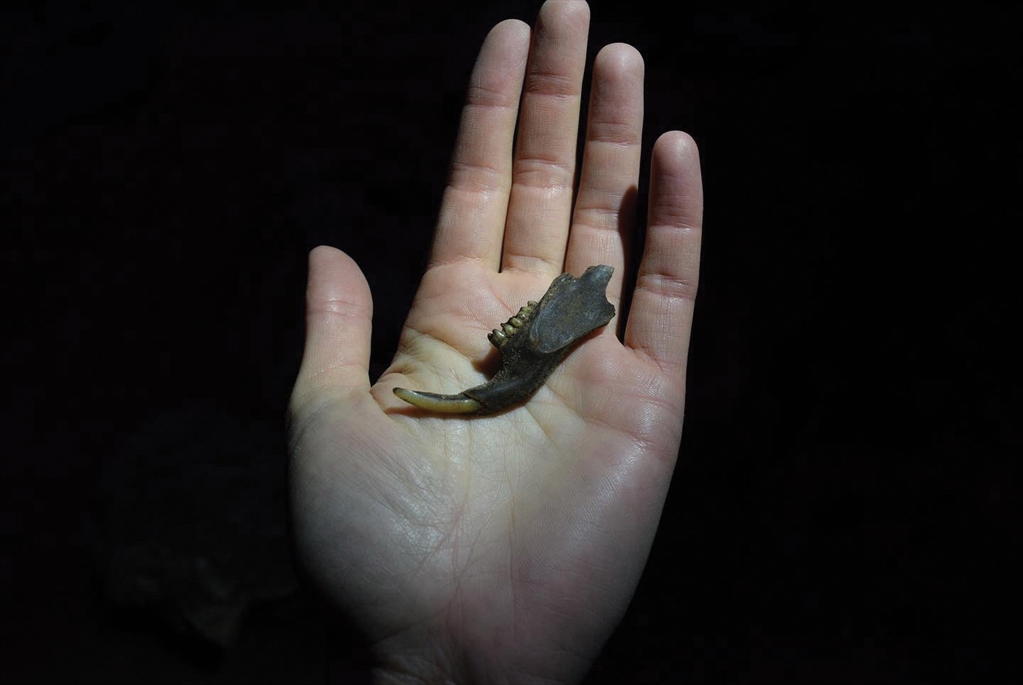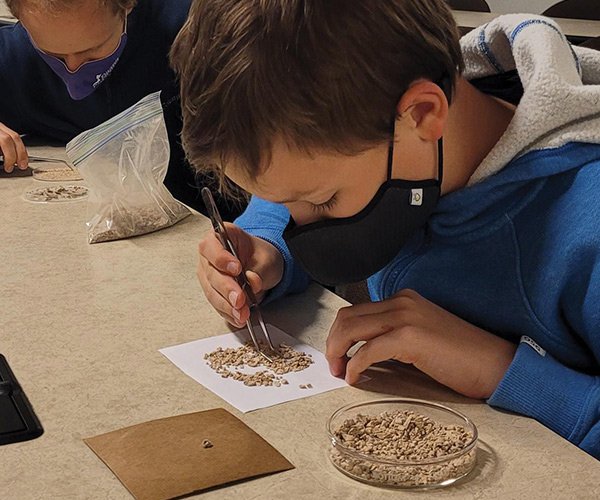Channel your inner Ellie Sattler (Laura Dern’s character in "Jurassic Park") at Tech’s Spatial Ecology and Paleontology Lab for Fossil Fridays. Sifting through dirt pulled from the Natural Trap Cave in Wyoming, community members can help researchers find fossils up to 30,000 years old. “We’re interested in ‘citizen science’ and making sure our community knows what we’re working on and feels included,” says Julia Schap, a third-year PhD candidate and one of the hosts of Fossil Fridays. “We don’t like this idea that science happens behind closed doors.”
Fossil Fridays begin Friday, September 2. Learn more and register here.
"CITIZEN SCIENTISTS" ARE WELCOME DURING FOSSIL FRIDAYS AT GEORGIA TECH.
This story by Jennifer Herseim first appeared in Georgia Tech Alumni Magazine.
Eleven-year-old Matthew and his brother Joey, age 7, are hunched over a small pile of dirt in Tech’s Spatial Ecology and Paleontology Lab. The brothers aren’t students at Georgia Tech—at least not yet, says their mother, Christine Conwell, PhD Chem 04, who works at Georgia Tech and is married to fellow Yellow Jacket David Gaul, PhD Chem 98.
Nevertheless, the two young fossil hunters are doing important work for the lab: helping researchers find fossilized bones, some of which could be 30,000 years old. Matthew and Joey are just two of the citizen scientists who have lent a hand during “Fossil Fridays,” an open, two-hour session when members of the community can come learn about paleontology and dig through dirt samples in search of real fossils.
“We’re interested in ‘citizen science’ and making sure our community knows what we’re working on and feels included,” says Julia Schap, a third-year PhD candidate and one of the hosts of Fossil Fridays. “We don’t like this idea that science happens behind closed doors.”
The program started in 2014 as a hands-on community activity, but also, partly, as a much-needed solution to help researchers in Jenny McGuire’s Spatial Ecology & Paleontology Lab at Georgia Tech sift through literally a ton of dirt pulled from the Natural Trap Cave in Wyoming.
As the name implies, the cave’s unique geography has made it an ideal spot for paleontologists—a large hole in a plateau above the cave acts as a natural trap. For hundreds of thousands of years, animals have fallen through the hole to an 80-foot drop below, explains Schap. The stack of bones below the hole is a treasure trove for researchers like Schap. She visited the cave with McGuire last summer. Their team bagged and shipped 2,000 pounds of sediment back to Atlanta.
Some of the fossils found in the samples come from rodents, rabbits, lizards, snakes, birds, frogs, and occasionally fish that get brought in by the birds. “A lot of Tech students like Fossil Fridays, especially those who are interested in medical school, because they become more familiar with what animal bones look like compared to humans,” Schap says. “Also, people think it’s just fascinating that you can touch fossils.”
The lab uses fossils in a variety of research areas. Schap studies fossils of small mammals to find out how these species were affected by climate at different periods of history. Her findings are useful for current conservation efforts.
Fossil Fridays are on pause for the summer but will resume in the fall. During a typical session, Schap likes to play movie soundtracks in the background to help fossil hunters unwind. “I sometimes play the Jurassic Park soundtrack to really help everyone get in the mood and to feel like they’re doing really important work—because they are.
For More Information Contact
Jess Hunt-Ralston
Director of Communications
College of Sciences at Georgia Tech





